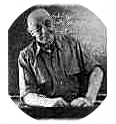
| Example Exemplar Entities | Alfred Korzibsky | ||||
| Page 1 (intro) | Page A (e-prime) | Page 2 (StrucDif) | Page B (RAW) | Page 3 (defs) | Page C Sane Jive |
Basic concepts from 'Science & Sanity (1933)' by Alfred Korzibsky
| Korzibsky-term: | Explanations + Links & Find out for your-self |
|---|---|
| Abstracting to abstract, | (*) |
| Animal Object | |
| Anthropometer | See Structural Differential |
| Characteristics | (*) |
| Event | |
| Extra-neural Investigation | |
| el-term elemental, | In dealing with ourselves and the world around us, we must take into account the structural fact that everything in this world is strictly interrelated with everything else, and so we must make efforts to discard primitive el-terms which imply a non-existing isolation. |
| Fido | |
| First Order Abstraction | |
| Horizontal Difference | |
| Infinite-valued | |
| Is of identity | (*) |
| Label | (*) |
| m.o. | See Multiordinality |
| (*) | |
| Experience and experiments show that the natural order was ‘sensation’ first, ‘idea’ next; the ‘sensation’ being an abstraction of some order, and the ‘idea’ already an abstraction from an abstraction or an abstraction of higher order. | |
| Nervous System | Any one who treats ‘mind’ in ‘isolation’ makes a structurally false assumption, and, by necessity, unconsciously ascribes some meaningless ‘infinite velocity’ to the nerve currents. (p.162) |
| Non-aristotelian - non-A - Ã-system | (*) |
| Non Elementalistic = non-el - É-system | (*) |
| Non-identification | (*) |
| Object | (*) |
| Objective level | (*) |
| s.r. or (s.r.) | s.r. or (s.r.) means semantic reactions, both singular and plural |
| Second Order Abstraction | (*) |
| Structure | In this vocabulary ‘structure’ is the highest abstraction, as it involves a whole, taken as-a-whole, made up of interrelated parts, the relations of which can be defined in still simpler terms of order. ‘Knowing’ in its broadest as well as in its narrow human sense, is conditioned by structure, and so consists of structural knowings. All empirical structures involve relations, and the last depend on multi-dimensional order. A language of order, therefore, is the simplest form of language, yet in structure it is similar to the structure of the world and ourselves. |
| Semantic Reaction = s.r. | … semantic reaction. This can be described as the psycho-logical reactions of a given individual to words and language and other symbols and events in connection with their meanings, and the psycho-logical reactions, which becomes meanings and rational configurations the moment the given individual begins to analyze them or somebody else does that for him. It is of great importance to realize that the term ‘semantic’ is non-elementalistic, as it involves conjointly the ‘emotional’ as well as the ‘intellectual’ factors. (p.24) |
| Semantics = General Semantics | (*) |
| Smith | (*) |
| Statements | … all statements which, by necessity, represent higher order abstractions must only represent probable statements. Thus we are led to infinite-valued semantics of probability, which introduces an inherent and general principle of uncertainty. |
| Structural Differential | If we identify, we do not differentiate. If we differentiate we cannot identify; hence, the Structural Differential. |
| Third Order Abstraction | (*) |
| Time-binding | (*) |
| Un-speakable Objective Level
| The term ‘un-speakable’ expresses exactly that which we have up to now practically entirely disregarded; namely, that an object or feeling, say, toothache, is not verbal, is not words. Whatever we may say will not be the objective level, which remains fundamentally un-speakable. |
| Vertical Difference | (*) |